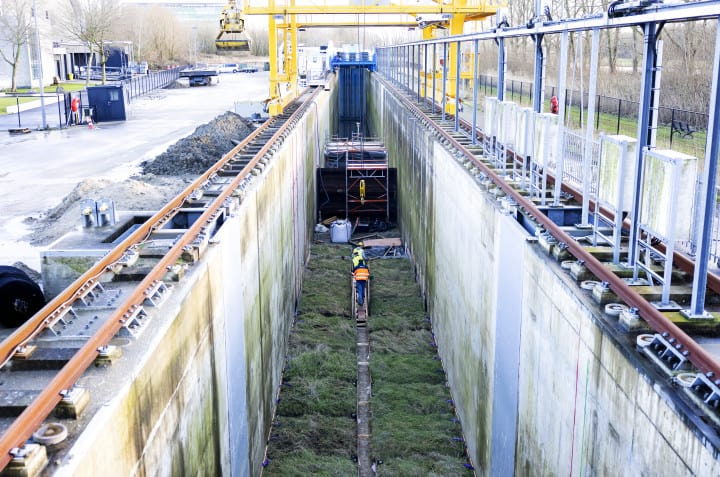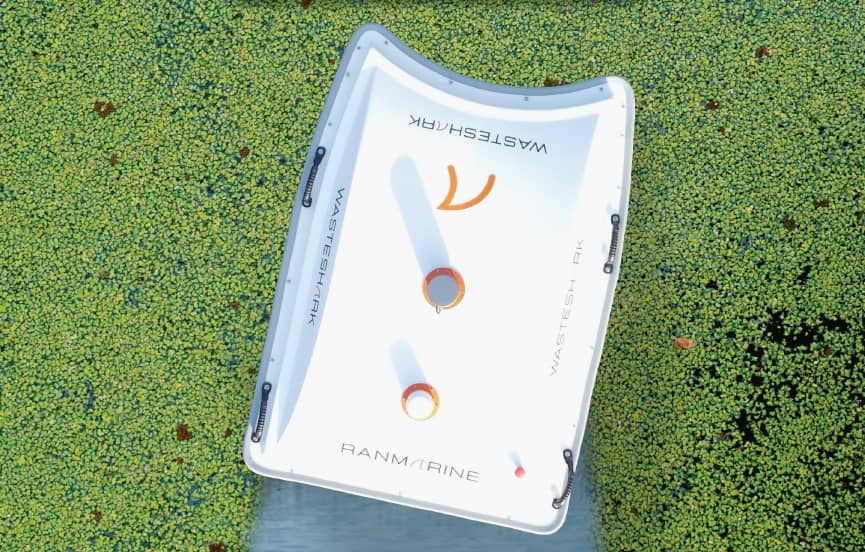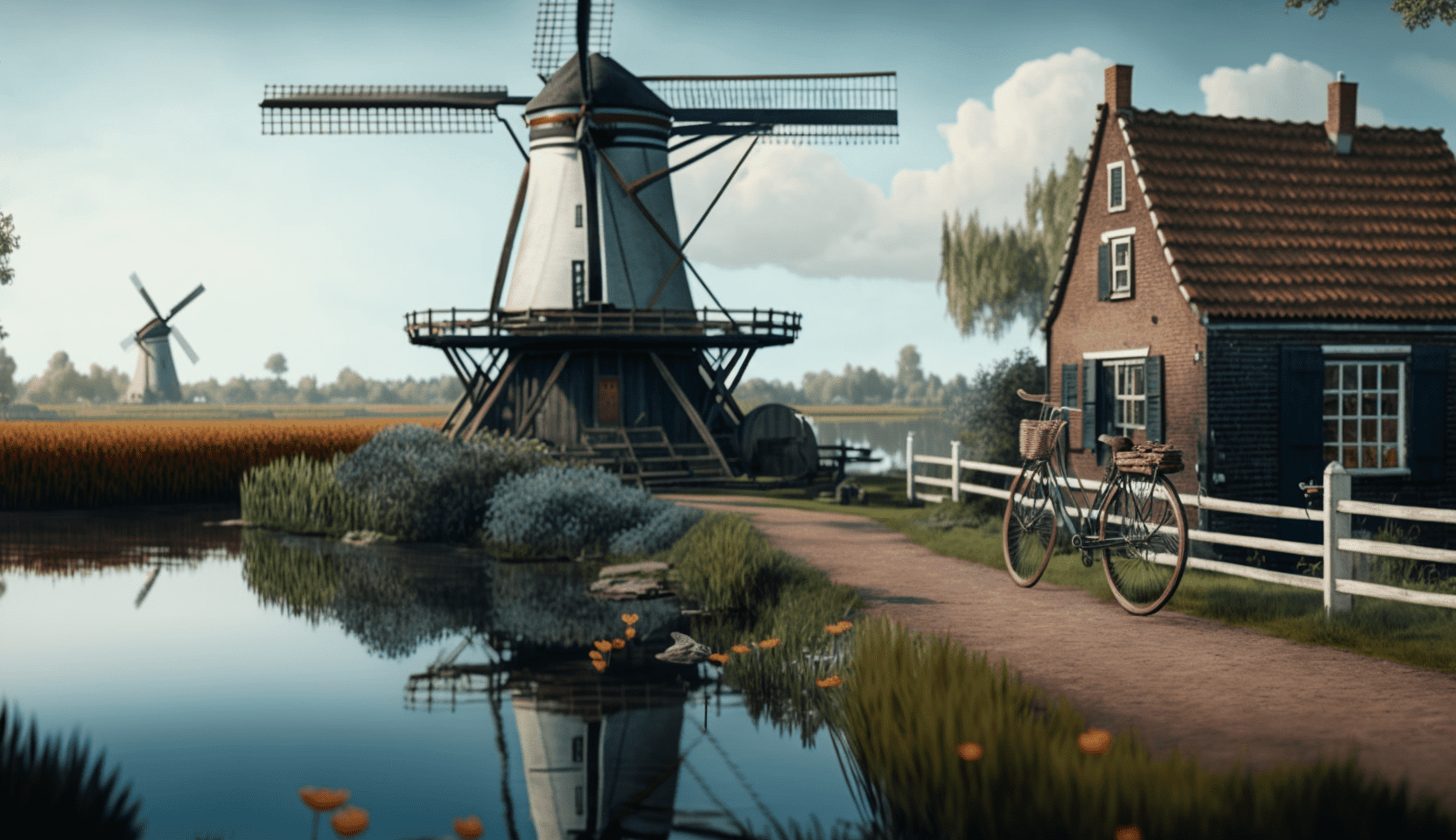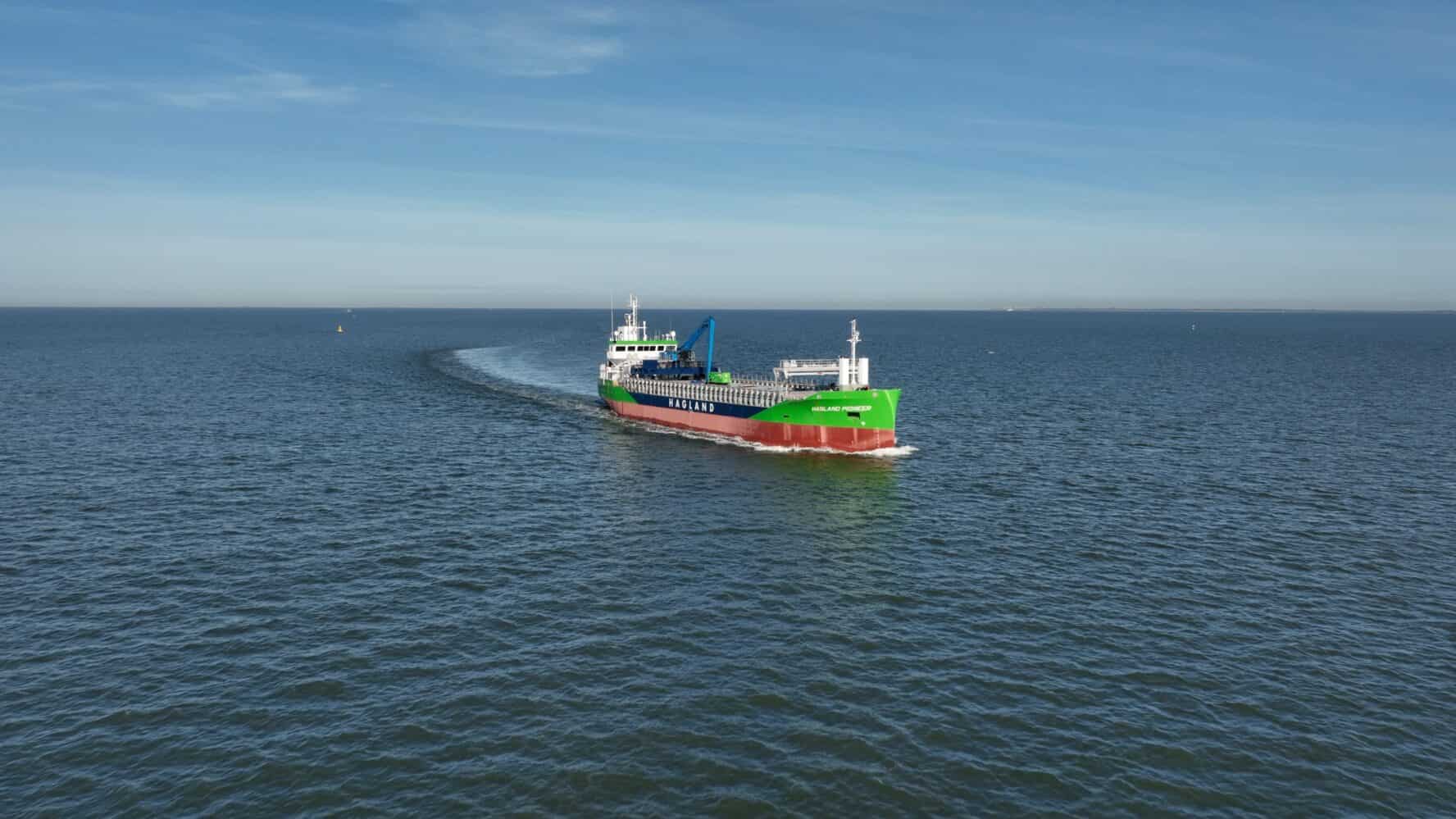
An excessive amount of sludge in Dutch inland waterways poses a threat to marine life and interferes with shipping, as it does in the Eems-Dollard in the province of Groningen. Through the use of innovative GEOWALL technology, artificial reef blocks are made from the excess sludge and are being laid down by the dike between Eemshaven and Delfzijl in Groningen. “We are creating a settlement habitat for oysters and mussels,” said Jip Koster, project leader for Reef Blocks at the engineering firm Netics.
The project is killing two birds with one stone: removing excess sludge from the Ems-Dollard and supporting marine life by creating artificial reef blocks. In recent years, dredging sludge from the Ems-Dollard was dried in a clay mill in Delfzijl. Four hundred reef blocks were then compacted at the harbor authority of Groningen Seaports and at the Chemport Europe innovation center. This involved the use of GEOWALL technology, which was developed out of the partnership between Netics and contractor Van Oord. The trial is made possible thanks to a grant from the Province of Groningen and the Wadden Fund.
“We carried out extensive research beforehand at Netics to determine the best composition of the clay mixture,” Koster explains. “Ultimately, we ended up with a recipe that consists of 95 percent ripened clay from the Ems-Dollard. Additives are mixed through that. Then the clay is pressed into a block under very high pressures. We designed a special pressing machine for this purpose.”
Apart from reef blocks, the surplus dredging sludge from the Ems-Dollard is also being used for other circular projects, such as building the Wide Green Dike.


Oysters and mussels
On Monday, the first blocks were placed in the water at two different locations in Groningen. Over the next five years, Netics will monitor how the reef blocks are affecting marine life. “The main thing is to provide a settlement spot for mussels and oysters. We are also looking at other organisms, such as algae and snails. There’s a huge sheet of sludge in the Ems-Dollard where they are unable to live at the moment. It has no oxygen or nutrition. So the blocks should change that.” The robustness of the blocks over the years is also being looked at. “Do they still look good after several years or will they fall apart? We need to get an answer to that as well.”
Although this is a small-scale pilot, Koster is expecting favorable outcomes. “We will not be able to save the marine life of the entire Ems-Dollard with just 400 blocks. But we can still study whether the reef blocks are doing their job. This will help us to decide in five years whether we should scale up.”
On Monday, the first blocks were placed in the water at two different locations in Groningen. Over the next five years, Netics will monitor how the reef blocks affect marine life. “The main thing is to provide a settlement site for mussels and oysters. We are also looking at other organisms, such as algae and snails. There is a large sheet of sludge in the Ems-Dollard where they are unable to live at the moment. It has no oxygen or nutrition. So the blocks should change that.” The robustness of the blocks over the years is also being looked at. “Do they still look good after several years or will they fall apart? We need to get an answer to that, too.”
Other materials
The construction of artificial reef blocks is nothing new in itself. But a reef made of circular materials is not very common at present. During his studies at Wageningen University & Research (WUR), Koster had already focused on placing concrete blocks in the water off the coast of Kenya, to give aquatic life a helping hand there. “However, the production of cement releases an enormous amount of CO2. Concrete materials also have to be transported, which creates even more emissions. As a student, I already asked myself whether this could not be done in a more sustainable way. Consequently, with the current project in Eemshaven, we are showing that it is possible, by using sustainable materials that are available locally.”
So in the current pilot, dredging sludge is used. But other circular materials can also be used to achieve the same result. “Construction projects, for example, often dig up a lot of ‘ordinary’ soil, you can also reuse that, as well as residual streams from concrete or surplus sludge from the water treatment industry,” Koster says.
The sky is the limit
Koster can envision that the reef blocks will eventually be used elsewhere in the Netherlands to improve water quality. “Consider, for example, placing the blocks deeper into the sea. It is also interesting to see what they can do at wind farms, where they also serve as breakwaters.” The sky is the limit, Koster says in conclusion. “If the results from our first pilot here in Groningen are positive, we may in time even be able to restore coral reefs in Australia. I expect that we will be able to make a major impact in the future.”








